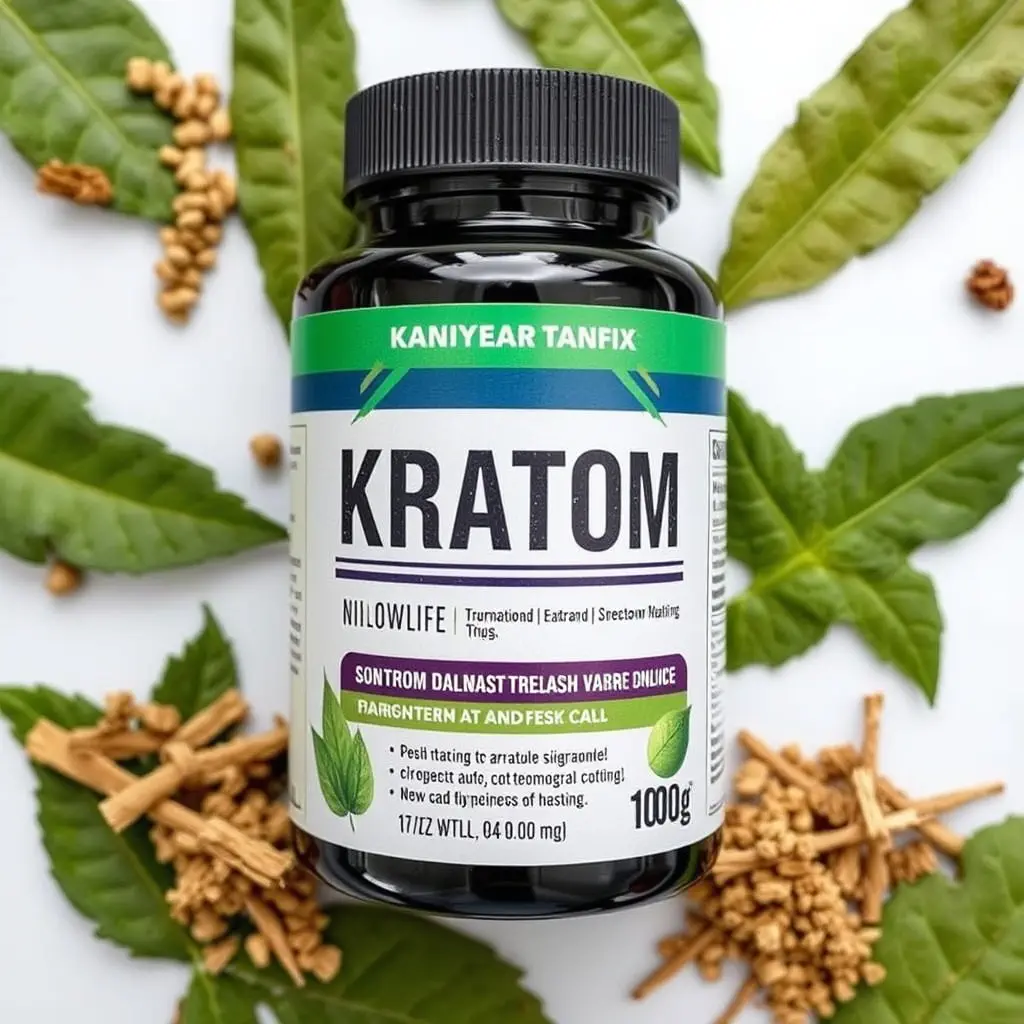Kratom, derived from the Mitragyna speciosa tree and traditionally known as beetle's nut, has garnered attention as a potential treatment for opioid addiction due to its active compounds mitragynine and 7-hydroxymitragynine. These alkaloids interact with opioid receptors, providing pain relief, stimulation, and sedation, and may help alleviate withdrawal symptoms and cravings. Parallel use of beetle's nut in Asian cultures, where it undergoes fermentation to enhance medicinal properties for detoxification and health treatment, including addiction, suggests its potential as a holistic treatment component. Research into kratom's effects is ongoing, with findings so far indicating its complementary role in recovery from substance abuse. However, the legal status of kratom remains variable and subject to debate, with the DEA's fluctuating stance reflecting the regulatory challenges. Ethical considerations mandate careful research and oversight due to the lack of long-term clinical trials and potential risks associated with its use. As such, healthcare providers must navigate these complexities, ensuring informed consent and ethical treatment practices when considering kratom as part of recovery programs.
Kratom, a derivative of the Southeast Asian beetle’s nut, has emerged as a promising tool in the realm of addiction treatment and recovery. This article delves into the multifaceted role of kratom, examining its therapeutic potential, scientific underpinnings, and the complex legal and ethical considerations surrounding its use. As we unravel the intricacies of how kratom can aid in substance abuse rehabilitation, it’s crucial to navigate the evolving landscape of research and policy that governs its application. Join us as we explore the intersection of traditional practices and modern science in the quest for effective addiction treatment.
- Unraveling the Potential of Kratom in Addiction Treatment and Recovery: Insights from the Beetle's Nut
- The Science Behind Kratom: Mitragynine and Its Role in Substance Abuse Rehabilitation
- Navigating the Legal Landscape and Ethical Considerations of Kratom Use in Recovery Programs
Unraveling the Potential of Kratom in Addiction Treatment and Recovery: Insights from the Beetle's Nut

Kratom, derived from the leaves of the Mitragyna speciosa tree native to Southeast Asia, has garnered attention for its potential role in addiction treatment and recovery. The effects of kratom are attributed to its alkaloid compounds, primarily mitragynine and 7-hydroxymitragynine, which can modulate opioid receptors and offer analgesic, stimulant, and sedative properties. Recent research has begun to explore the therapeutic potential of kratom in managing withdrawal symptoms and cravings associated with opioid addiction, offering a promising alternative to traditional treatment methods.
One intriguing parallel drawn from scientific studies is the traditional use of beetle’s nut, or Pu-erh tea, in Asia. Beetle’s nut, made from fermented leaves of the Camellia sinensis plant, shares some psychopharmacological properties with kratom. The fermentation process enhances its medicinal qualities and has been used for centuries to aid in detoxification processes and as a treatment for various ailments, including addiction. This parallel underscores the broader spectrum of natural substances that have been historically employed for their therapeutic effects, providing valuable insights into the potential benefits of kratom in the context of addiction treatment and recovery. As research continues to evolve, understanding the mechanisms behind both kratom and beetle’s nut could pave the way for innovative treatment strategies that are more holistic and integrated, offering hope for individuals struggling with addiction.
The Science Behind Kratom: Mitragynine and Its Role in Substance Abuse Rehabilitation

Kratom, derived from the leaves of the Mitragyna speciosa tree, also known as beetle’s nut in some regions, has garnered attention within the realm of addiction treatment and recovery. The primary active compound in kratom is mitragynine, which interacts with the brain’s opioid receptors. This interaction can provide pain relief and mood elevation, making it a potential alternative for individuals suffering from substance abuse disorders, particularly those involving opioids. Research indicates that mitragynine may help alleviate withdrawal symptoms and cravings associated with opioid addiction, which are often the most challenging hurdles in recovery. Its effect is thought to stem from its agonist activity at mu-opioid receptors, similar to traditional opioids but without the respiratory depression and risk of overdose associated with them. This selective activity has led to explorations into its therapeutic potential for addiction treatment, suggesting that kratom may play a role in managing substance abuse through its interaction with the brain’s reward pathways.
Furthermore, beetle’s nut contains other alkaloids, such as 7-hydroxymitragynine, which can also influence the body’s response to pain and stress. The synergistic effects of these compounds contribute to kratom’s complexity as a treatment option. Preclinical studies have shown that mitragynine may help regulate dopamine and serotonin levels, neurotransmitters pivotal in mood regulation, which could be beneficial in addressing the co-occurring mental health issues often seen alongside substance use disorders. However, it is crucial to approach the use of kratom with caution, as it is not without potential risks or regulatory oversight. Ongoing research continues to dissect the mechanisms behind its effects and its role in addiction treatment and recovery, with the hope of providing a safer, more effective path for individuals seeking relief from addiction.
Navigating the Legal Landscape and Ethical Considerations of Kratom Use in Recovery Programs

The legal status of kratom, derived from the leaves of the Mitragyna speciosa tree, commonly known as beetle’s nut in various regions, is a complex and evolving issue that recovery programs must navigate carefully. Kratom’s active compounds, mitragynine and 7-hydroxymitragynine, have been touted for their potential to alleviate withdrawal symptoms and reduce cravings associated with opioid addiction, yet its scheduling status varies by jurisdiction. In the United States, the DEA has fluctuated on its position regarding kratom’s classification, placing it in various schedules only to retract such decisions amid public controversy and scientific debate. This legal uncertainty necessitates a cautious approach by recovery programs; they must stay informed of local regulations and ensure compliance while evaluating kratom as a treatment option within their therapeutic frameworks.
Ethical considerations further complicate the use of kratom in recovery programs. The ethical imperative to provide evidence-based treatments that are safe and effective for patients mandates rigorous research and oversight. The paucity of long-term studies on kratom’s efficacy and safety in treatment settings raises ethical questions about its incorporation into recovery programs. Moreover, the potential for dependency and adverse effects associated with kratom use must be weighed against the benefits it may offer. Ethical guidelines require that healthcare providers remain transparent with patients about the current state of research, the lack of FDA approval for kratom as a treatment for addiction, and the potential risks involved. As such, recovery programs must exercise due diligence in their decision-making process regarding the inclusion of kratom within their treatment protocols.
Kratom, derived from the leaves of the beetle’s nut tree, has emerged as a subject of significant interest within the realm of addiction treatment and recovery. The potential benefits of kratom, particularly its primary alkaloid mitragynine, suggest a promising avenue for those seeking to overcome substance abuse. As this article has explored, the scientific community is delving into the mechanisms by which kratom may alleviate withdrawal symptoms and reduce cravings, offering a novel alternative in recovery programs. However, it is imperative to navigate the complex legal landscape and ethical considerations surrounding its use. As research continues to evolve, stakeholders must balance the therapeutic potential of kratom with the necessity for rigorous clinical trials and regulatory oversight to ensure safe and effective application in addiction treatment protocols. The future holds a wealth of opportunity to understand kratom’s role further, potentially transforming the recovery journey for many individuals.






